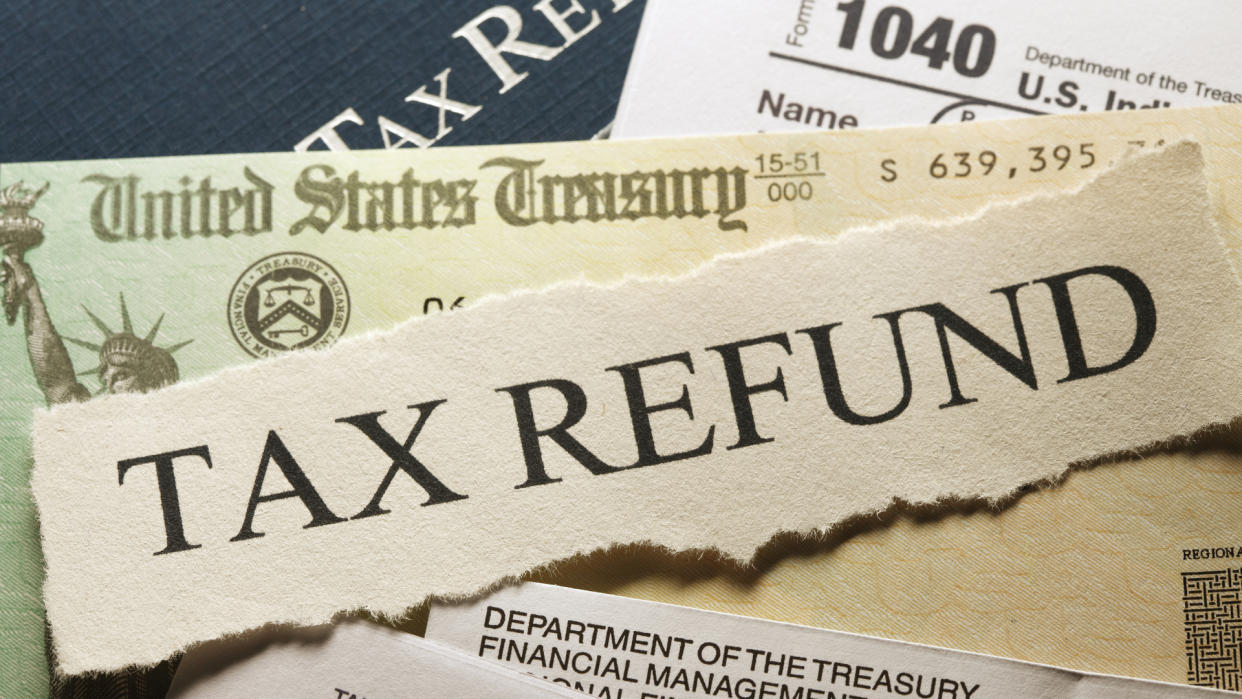Here’s the Average IRS Tax Refund Amount by State

Generally, the sooner you file your taxes, the sooner you’ll see your refund in the bank — and it reduces the chances of tax fraud. The amount that you receive, if any, depends on a number of factors, including how much of your income isn’t subject to tax withholding, how many deductions and credits you claim and how you filled out your W-4, which is the form your employer uses to determine how much to withhold from your paycheck for income taxes.
Read: 3 Signs You’re Serious About Raising Your Credit Score
Though the Internal Revenue Service, or IRS, set the start date for Jan. 23, even if you’re a procrastinator, you’ll want to file your tax return before the April 18 filing deadline this tax season. If you think you’re getting a refund, you’ll want to know what to expect.
What’s the Average Tax Refund?
The average tax refund for the 2022 tax year is $1,963 as of early February, according to the IRS. This dipped slightly from the 2021 filing season, when the average federal tax refund for individuals was about $2,200.
The average tax refund also varies by state. But, before you get jealous of those living in another state, remember that receiving a tax refund just means you made an interest-free loan to Uncle Sam, and the government is now paying you back for the extra amounts that were taken out of your paycheck.
Tax Refunds by State
You can always check your refund status individually. However, sometimes it can be eye-opening to compare your paper returns with those who live elsewhere. Here’s a look at the average tax refund issued by state as of 2021, listed from the highest average refund amount to lowest:
State | Average Refund Issued per Return |
|---|---|
Iowa | $2,537 |
Texas | $2,495 |
New Jersey | $2,489 |
Connecticut | $2,429 |
Illinois | $2,407 |
New York | $2,399 |
Nebraska | $2,331 |
Utah | $2,303 |
Delaware | $2,297 |
Minnesota | $2,268 |
Wyoming | $2,267 |
Tennessee | $2,247 |
South Dakota | $2,246 |
Nevada | $2,211 |
North Carolina | $2,209 |
Kansas | $2,207 |
Missouri | $2,205 |
North Dakota | $2,202 |
Oklahoma | $2,189 |
Michigan | $2,187 |
Alaska | $2,177 |
Louisiana | $2,171 |
Colorado | $2,155 |
Wisconsin | $2,154 |
Florida | $2,137 |
Massachusetts | $2,137 |
Georgia | $2,135 |
Virginia | $2,111 |
Washington | $2,106 |
California | $2,105 |
Indiana | $2,098 |
Mississippi | $2,093 |
Arkansas | $2,082 |
Idaho | $2,074 |
Rhode Island | $2,063 |
Ohio | $2,059 |
Kentucky | $2,059 |
Hawaii | $2,041 |
Alabama | $2,027 |
Arizona | $2,025 |
Maryland | $2,022 |
New Hampshire | $2,001 |
South Carolina | $1,984 |
West Virginia | $1,978 |
New Mexico | $1,960 |
Vermont | $1,920 |
Maine | $1,908 |
Montana | $1,905 |
Oregon | $1,895 |
Pennsylvania | $1,833 |
In past years, the IRS would issue most tax refunds within 21 days; however, the IRS has warned that there could be delays again this year. Certain other things can delay the processing of your refund, including the following:
Incomplete returns
Returns with errors
Returns affected by identity theft or fraud
Returns with claims for the earned income tax credit or additional child tax credit
Returns with Form 8379, injured spouse allocation, which can take up to 14 weeks to process
Within 24 hours of e-filing, or four weeks of filing by mail, you can visit the IRS “Where’s My Refund” site to check the IRS refund schedule and the status of your refund. Information on the site is updated daily, typically overnight.
What to Do With Your Refund
In a 2022 GOBankingRates survey, 37% of respondents said they would put their tax refund toward paying off debt. Once you get your refund, it might be tempting to treat yourself and spend it. But paying down or paying off debts is a smarter choice — if you pay off a credit card, for example, you can reduce your credit utilization ratio and bump up your credit score.
Other financially sound options for your tax refund include:
Padding your emergency fund
Contributing to a retirement plan
Improving the value of your home by tackling home renovations
Making charitable contributions that you can deduct from your next return
Investing the money in stocks or CDs
Investing in yourself with a fitness or certification program
Final Take
Whether your taxes go towards child and dependent care or just standard deductions, it is always good to see a refund on the horizon. Remember that you don’t have to make an “all-or-nothing” choice with your refund; you can tuck most of it away in investments or home improvements, for example, but still treat your family to a night out with a small portion of your refund.
FAQ
Here are some quick answers to common questions about tax refunds.
How much does an average person get back from taxes?
The average person can expect back an estimated tax refund of around $1,963 for tax year 2022, according to the IRS. This is a little lower than the 2021 filing season, when the average federal tax refund for individuals was over $2,000.
What is the average tax return for a single person making $40,000?
If you are a single person making $40,000 annually, you could expect a tax return of around $1,761 on average.
Michael Keenan contributed to the reporting for this article.
This article originally appeared on GOBankingRates.com: Here’s the Average IRS Tax Refund Amount by State
